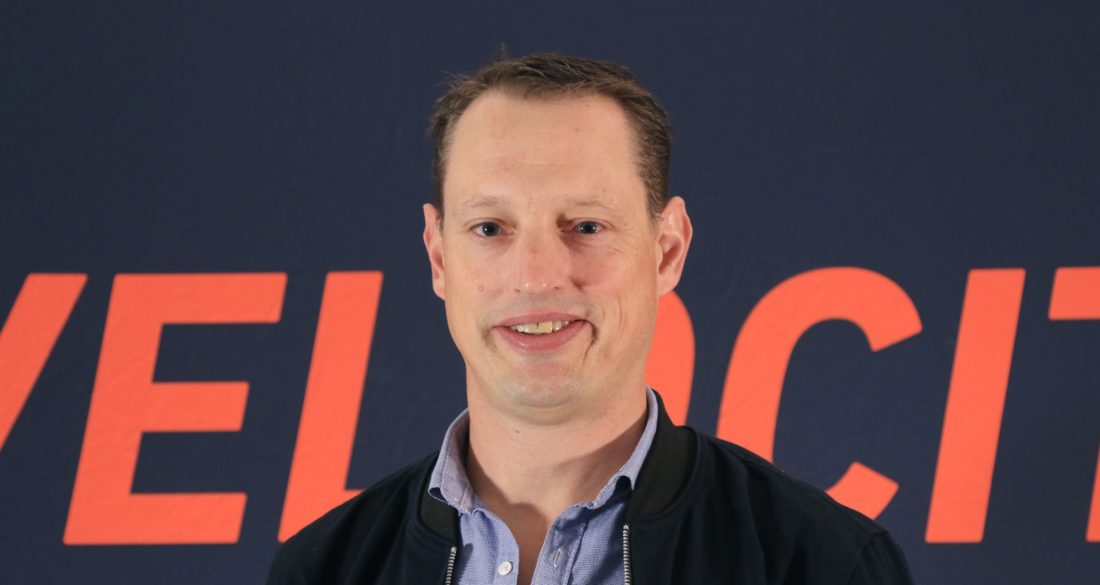People want to have an easy convenient experience the first time they start touching the [sports] club, even from the point of view of registration and clarity of what the service is.
Anthony Richardson is Head of Digital at SportsTG, a provider of digital solutions to national, state, grassroots, and professional sporting organizations across Australia, New Zealand, and the United Kingdom. Richardson’s expertise includes product innovation and business development in the ecommerce, sports, and finance industries.
In this episode of Velocitize Talks, Richardson discusses how digital has created opportunities for all-level sporting communities to feel connected and informed.
In search of the perfect sport (1:26)
There’s a real question of how to make it easy for volunteers, who may well be untrained, to have an easy experience to try and get the game together so that the kids and the juniors can play.
Beyond word of mouth, youth and amateur athletes search online to identify a sports club or team they can join. Clubs are required to have an easy-to-navigate website that offers options like storefronts, membership benefits, sponsorship opportunities, blogs, league information and scores. There should also be an excellent members-only interface.
Local clubs are in the initial phases of using search and social media for inbound marketing and sales conversion. They also have their sights on how to leverage their website or social accounts to promote sponsorships.
Keeping it local (3:26)
We’re creating website experiences that are good looking, clean and simple, and that in the end meet a budget.
One of SportsTG’s customers, Australian Football League, wanted to expand their reach into local football clubs. To engage with community participants and fans, they provided a hub for thousands of competitions and teams across Australia. Each year over 180,000 children register for AFL programs at more than 4,000 nationwide centers. Due to high demand, SportsTG built AFL a website with a quick and smooth registration and payment system.
SportsTG also created a system for the AFL that allows parents of new and aspiring participants to easily locate their nearest local program, and register and pay online. This enabled local programs to keep costs down. Meanwhile they could focus on running clinics and competitions that players both young and old enjoy.
Sports fans (5:01)
Our digital magazine is by the athlete, for the athlete. It’s about bringing athletes’ stories to youth sport to have them understand the pathway that they took.
SportsTG is part of the Stack Sports family which includes Stack, a website that delivers advice and information from the top coaches, trainers, strength and conditioning specialists, nutritionists, sports psychologists and other experts who help athletes achieve their goals.
Richardson notes there has been an increase in demand for products that are about performance and recruitment. This is happening at both the professional and amatuer levels. By offering advice and performance tips from professionals, it meets this demand on the SportsTG platform. And it offers elite athletes a way to support emerging talent.
Game on (6:02)
The kids are learning a lot just through watching and playing those esports-type games. They’re going out and replicating the movement of their favorite players.
Due to the 2020 pandemic, many in-person sporting events have been cancelled or playing to empty stadiums or venues. Now there is more demand for virtual sporting events, which has led to an acceleration of growth in esports. A joint report by IDC and Esports Charts found that Twitch livestreaming hours watched (esports tournament hours included) have nearly doubled since the pandemic began.
The combination of the explosion of esports and realistic games, like NBA 2K and FIFA, have created a realm where the action of the individual athletes in those games is so realistic, it is serving as training and inspiration for athletes on all levels. In fact, the VR industry is touting the ability of their products to fill in the gap for cardio and fitness needs.
Put me in, coach (8:18)
Kids from very young ages are starting to get exposed to technologies and platforms that recruiters will start to look at a much longer journey and data background of every athlete as they look at their entire growth.
Since the advent of wearables, tracking users’ performance data has become commonplace. This is true of amateurs to athletes of all ages. Since younger athletes are wearing this type of technology now, it helps to create databases of information about them. Richardson believes this will increase the use of this data for future athlete recruitment.
Due to the competitive nature of professional sports, it’s increasingly commonplace for coaches and trainers to use wearable technology to monitor their athletes’ performance. In turn, coaches and recruiters are able to keep an eye on their athletes. In the future they will have the option to view historical data on an athlete in order to make decisions on a recruit’s health and value.
For more information on SportsTG, check out their website and follow them on Facebook and LinkedIn. To stay up to date with Richardson, follow him on LinkedIn.
This interview was originally recorded in 2019 in Melbourne and has been updated accordingly.
